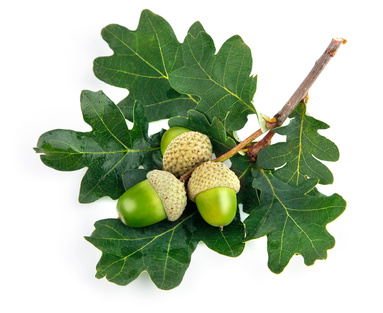Learn Geography Online
The cyclical change from summer to fall and winter sees much of the compositional ground flora decrease and survive under the ground. They do this in the form of roots bulbs and tubers. This ground flora includes many species already mentioned like dogs mercury, blue bell, brambles and bracken to name a few. Because leaves are off the forest canopy often until May, more light can get through to the forest floor. The flora often take advantage by rapid growth and flowering ofter by the first sign of spring which may be as early as Mid February in some parts British Iles. This increase in flora dies back when the leaves of the other head canopy come into view.
Oak trees reproduce by the method of acorns. So many animals such as squires and voles feed on these, destroying the seeds inside and ensuring that reproduction does not take place. Also oak juveniles find it difficult to grow under the parent tree because they are not shade tolerant. This thus increases the difficulties of reproduction. However to combat these difficulties, oak trees live extremely long lives, sometimes as long as 400 years and produce thousands of acorns in a life time. Also large birds such as jays may have developed a symbiotic relationship with oaks, in that often oak trees provide food for these birds. The acorns that are not consumed are thus hidden from squirrels and are often taken a distance to a sunny area. There they will be allowed to grow thus ensuring the survival of the species (Chapman & Reiss Ecology Principals and Applications p167-171 Cambridge University Press 1992 &1994).
